Pulitzer-Prize Winning Journalist Reflects on 50 Years of the FHA
Craig Flournoy, University of Cincinnati Journalism Professor, helps to create a new and better history
By Julie Campbell-Holmes
3/25/18
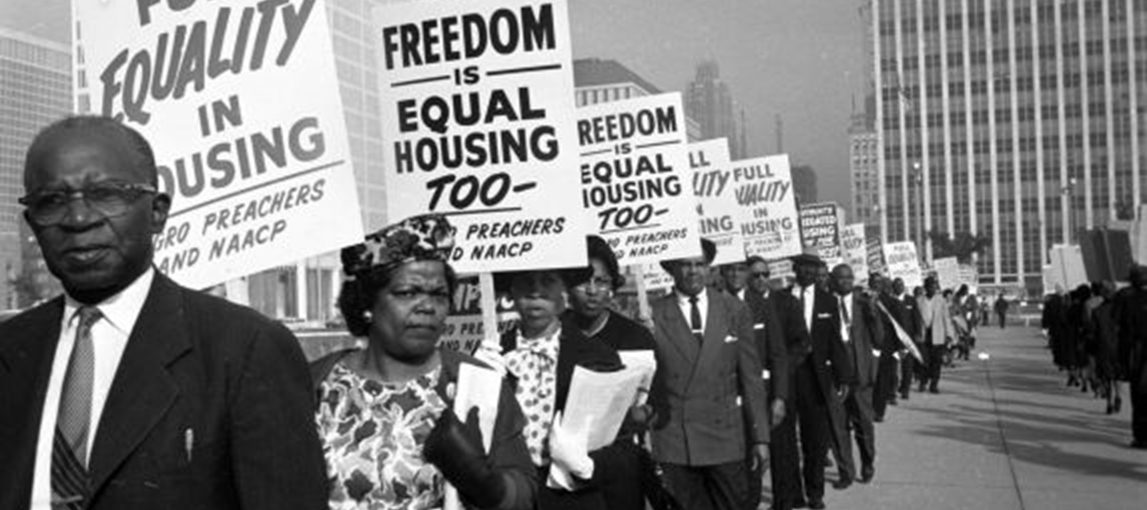
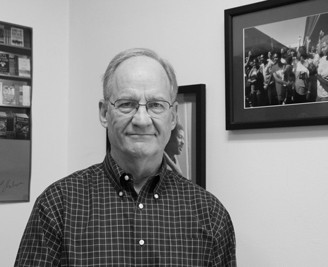
Professor Craig Flournoy (photo by Elizabeth Vleaminck)
As anniversaries go, this is a significant one.
On March 28, the Benjamin N. Cardozo School of Law in New York City will host The Fair Housing Act After 50 Years, a symposium commemorating the half-century anniversary of the passage of that landmark civil rights bill.
The speakers will include a former head of the U.S. Department of Housing and Urban Development; 19 of the nation’s top legal scholars and civil rights attorneys specializing in fair housing law; and a journalism professor from the University of Cincinnati, Dr. Craig Flournoy.
Flournoy will serve as the first speaker on the symposium’s initial panel. He will examine the role of urban riots in pressuring Congress to pass the Fair Housing Act and the mainstream media’s repeated failure to cover the riots, black ghettos and African Americans. He also will discuss "Separate and Unequal", an eight-part series in The Dallas Morning News that documented how public and private officials constructed and maintained a vast system of racially segregated, starkly unequal federally-assisted housing that made a mockery of civil rights laws. For that series, Flournoy and a colleague were awarded the 1986 Pulitzer Prize for National Reporting.
Many of those in attendance at the Cardozo Symposium likely will lament what has not been accomplished in desegregating the nation’s housing and overcoming racial discrimination since 1968. Flournoy will not be one of them. Though he has spent his journalistic and academic career chronicling racial injustice, he believes despair is a soulless cop-out. As Dr. Martin Luther King, Jr. put it, “The arc of the moral universe is long, but it bends toward justice.”
This video created by The Dallas Morning News showcases “Separate and Unequal: Subsidized Housing in America,” a newspaper series written by Craig Flournoy and George Rodrigue in 1985. Flournoy and Rodrigue received a Pulitzer in 1986 for their efforts to uncover patterns of racial discrimination and segregation in public housing across the United States.
How it all began
Flournoy’s investigation of housing discrimination began after he learned about a controversial federal court ruling. In December 1983, U.S. District Judge William Wayne Justice—seeking to integrate and provide equitable public housing to black and white families in the small East Texas town of Clarksville—ordered 25 white families to move into the all-black Cheatham-Dryden housing project and 25 black families to move into the all-white College Heights housing project. Judge Justice issued the order in response to a lawsuit filed by Lucille Young and Virginia Wyatt, two black women who said officials with the Clarksville Housing Authority refused to provide them with adequate housing.
“I wondered what had prompted the judge to issue such a radical ruling,” Flournoy recalled. “The decision ignited a national controversy. Reporters from national newspapers and the networks did quick-hit stories. Many portrayed it as judicial social engineering. I asked my editors at The Dallas Morning News if I could see if there was more to this story. They agreed.”
Flournoy discovered that the judge’s ruling was the most recent development in a case filed in 1980. He dug into the court files and learned officials at the Clarksville Housing Authority openly admitted they segregated tenants based on their race—a clear violation of the 1964 Civil Rights Act. He then drove to Clarksville to visit the two housing projects.
“The white complex was in a white neighborhood that had a low crime rate,” he said. “The streets were in excellent shape, and there were paved sidewalks surrounding the complex. Each apartment had an air conditioning unit. There was a game room on the first floor that served as a gathering place for the residents.”
Flournoy found very different conditions at the Cheatham-Dryden project. “The black project had none of these amenities inside or outside,” he said. “It was located in a black neighborhood with a high crime rate. In other words, separate meant unequal, at least in Clarksville, Texas.”
According to Judge Justice’s ruling, Clarksville housing officials had long refused to provide black families with adequate housing, even when their applications were at the top of the waiting list and apartments were available in the white College Heights project. Following the court order, few white families moved into the black project. However, all 25 black families moved into the white project. Clarksville Mayor L.D. Williamson told a UPI reporter the black families were moving against their will:
" 'We don't have any racial problems,' the mayor said. 'The whites are not mad at the blacks. The blacks are not mad at whites. They're all mad at William Wayne Justice. If given the choice, none of them would have moved.
Williamson said white residents did not comply with the order to move into black housing because they do not believe in integration.
“ ‘You're dealing with very elderly people. They were not brought up in a time where integration was accepted, and they're still not going to accept it" [1]
However, most black families who moved said they welcomed the opportunity to live in a better apartment in a safer neighborhood that offered far more services and amenities. As Dora B. Lawrence, one of the new black residents, put it, “It’s ok with me. I don’t like being contrary. I’m old. Wherever they send me, it’s fine. But personally, I feel that voluntary integration should have happened a long time ago.” [2]
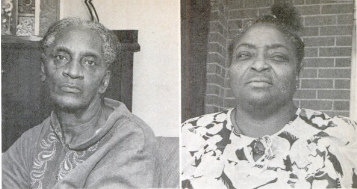
The black families interviewed at the time reinforced the idea of integration. Dora B. Lawrence (l) said integration in Clarksville is overdue. Ruby N. Robinson (r) thinks the court-ordered plan can work.
After Clarksville, Flournoy spent two-and-a-half months visiting federally-assisted housing in more than a dozen cities and towns in East Texas and found the same pattern in each one: the tenants were racially segregated and black families invariably were given inferior housing compared to white residents. His editors believed this was a terrific story and needed to be published. Flournoy was not so sure.
“It would not shock anyone to learn that good old boys in East Texas were discriminating against African Americans,” Flournoy told his editors. “What if the same situation could be found in cities across the country?”
His editors agreed to expand the project and assigned a partner, George Rodrigue, to work with Flournoy on what was now a national project. The two reporters eventually decided to include all the nation’s federally assisted housing in their investigation. In 1985, that included 60,000 developments that provided housing for almost 10 million Americans. Flournoy and Rodrigue later described the daunting task this way:
The 14-month investigation examined federally assisted housing in 47 cities from the Northeast to the West Coast. We also interviewed hundreds of tenants in public housing: current and former officials at local housing authorities and the U.S. Department of Housing and Urban Development; and private housing experts. Additionally, thousands of documents were acquired from federal agencies through the Freedom of Information Act. [3]
What Flournoy had seen in Texas, they found across the country—from San Francisco and Seattle and Detroit to Atlanta and Chicago and Boston. As they would later write in their series:
The News did not find a single locality in which federal rent-subsidy housing was fully integrated or in which services and amenities were equal for whites and minority tenants living in separate projects.
Congressional laws, federal regulations and court decisions handed down over the last two decades have prohibited racial segregation and discrimination in federally funded housing. Yet the U.S. Department of Housing and Urban Development, responsible for more than 90 percent of the nation’s federally subsidized rental housing, often has ignored the illegal operation of these housing programs by many local housing authorities and private developers. [4]
The Dallas Morning News published their eight-part series "Separate and Unequal" in February 1985. One year later Flournoy and Rodrigue were honored with the Pulitzer Prize for National Reporting—the first Pulitzer ever awarded to The Dallas Morning News. Flournoy was gratified to receive journalism’s highest honor. However, he also was ambivalent because he felt the fight to reform federally-assisted housing was far from over. “I didn’t write the articles because I wanted to win an award,” Flournoy stated. “I wanted to make a difference, to bring about necessary change.”
Black and white in Los Angeles
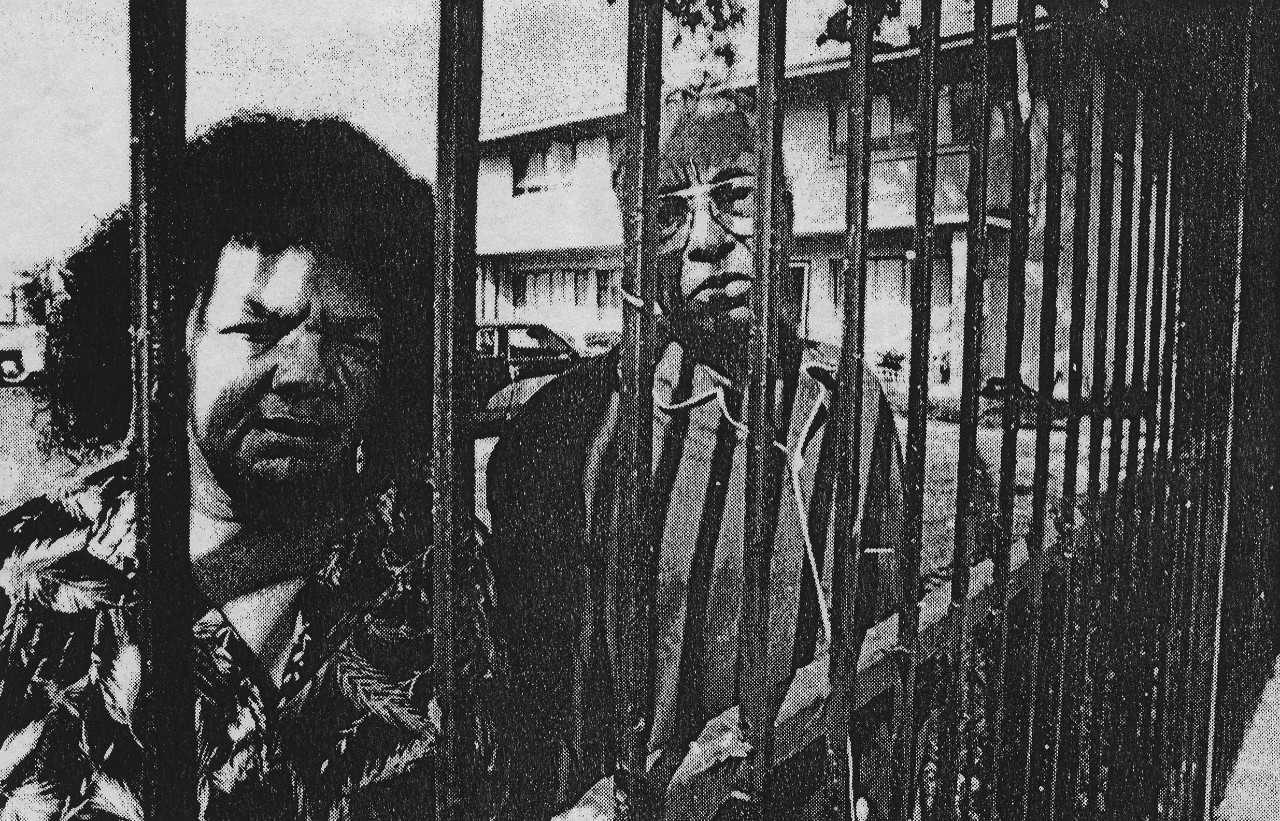
This photo shows Willie Lewis (r) and his wife Birdell at the Nickerson Gardens public housing project in Los Angeles in 1985. The project houses 1,000 black families and elderly persons. There is no underground parking, central air and heat, or security guards -- though Nickerson Gardens was located in one of the most crime-ridden neighborhoods in Los Angeles. The only “security” was provided by a grease-coated, wrought iron fence with spikes pointing inward. When Flournoy asked Mr. Lewis why he thought the Los Angeles Public Housing Authority had the contactor install the spikes pointing inward, he said, “They think we’re animals so they’re fencing us in.”
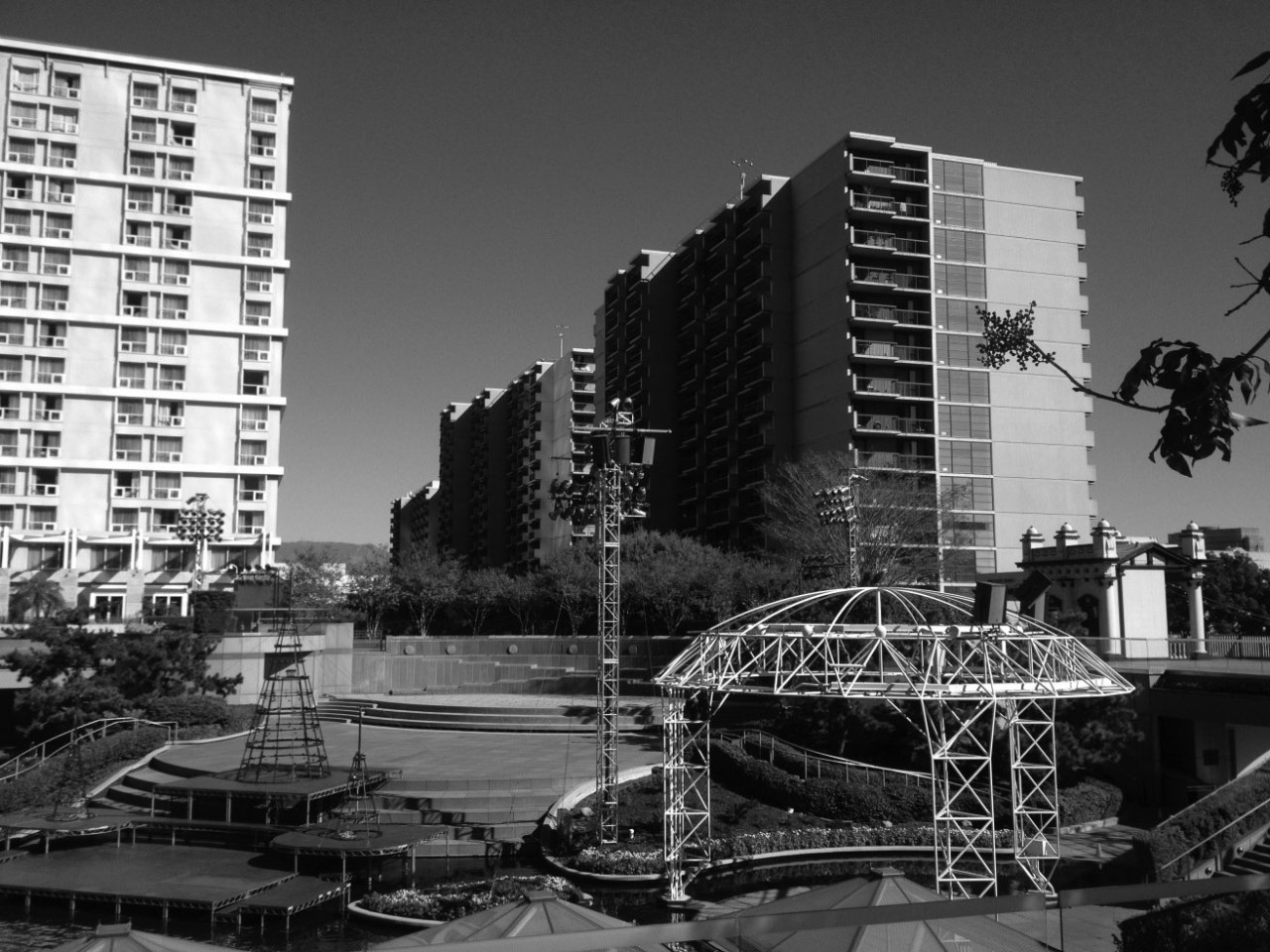
Opened in 1980, the Angelus Plaza in Los Angeles was and remains the largest senior living complex in the country. The massive structure won awards for its architecture, which made use of prefabricated units to create 1,100 residences for older white adults. The apartment complex is located in a safe area and includes underground parking, a 24-hour security guard, and central air and heating. Among the community center’s amenities: a 10,000-volume library; two pottery kilns; free psychological counseling; free legal aid; no-interest loans; one-dollar lunches; a van to take the Angelus Plaza tenants shopping.
Fifty years of the Fair Housing Act
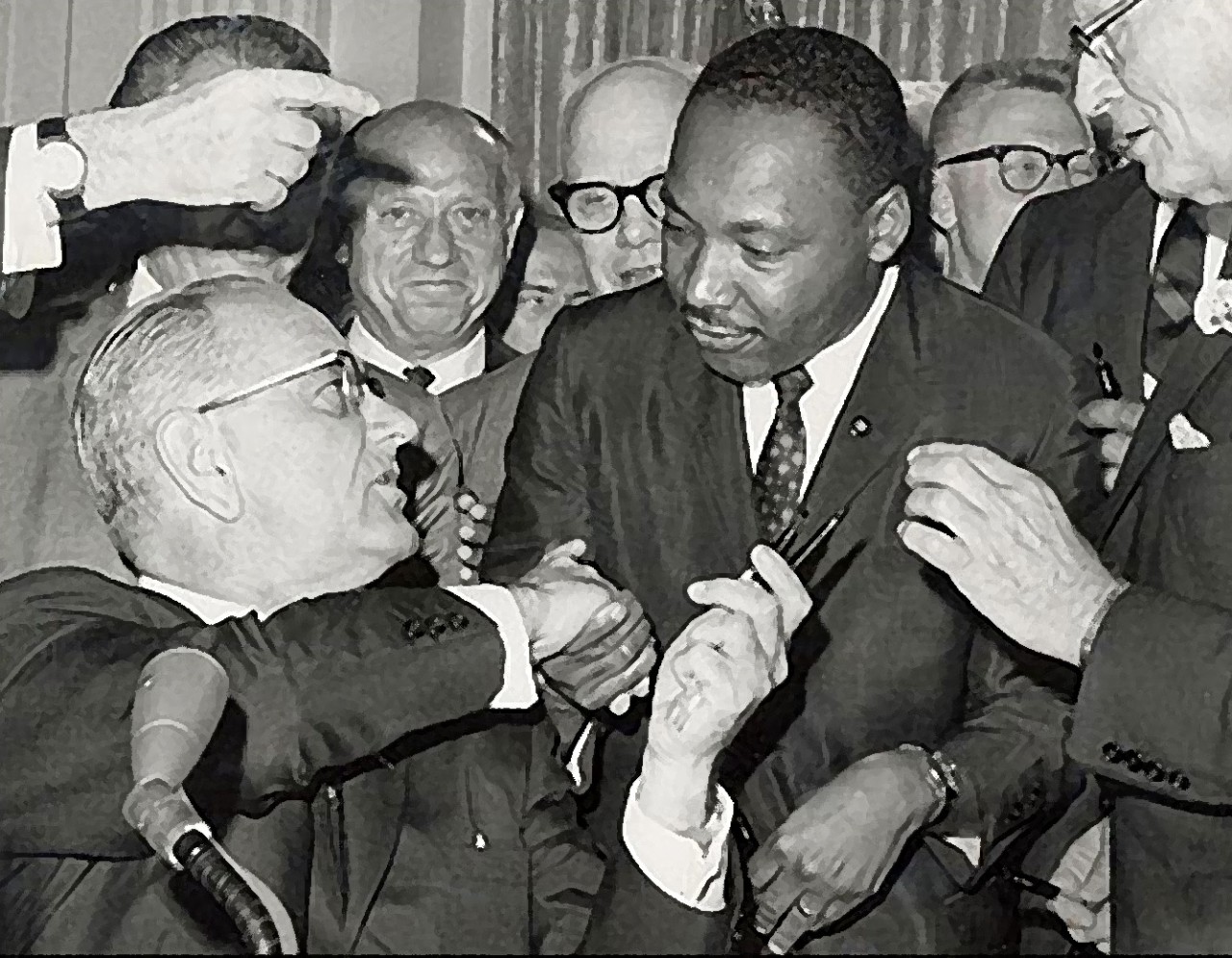
In this July 3, 1964 photo, U.S. President Lyndon Johnson (c) shakes hands with civil rights leader Martin Luther King (r) after handing him a pen during the ceremonies for the signing of the civil rights bill at the White House. (AFP/Getty Images)
A series of violent police encounters with African Americans in the mid-1960s sparked uprisings in more than 100 cities including Los Angles, Detroit and Cincinnati. In 1967, President Johnson established the National Advisory Commission on Civil Disorders to investigate the riots, why they occurred and what could be done to prevent future violence. Illinois Governor Otto Kerner served as chairman. On February 29, 1968, the Commission issued the “Kerner Report,” a landmark document which concluded the primary cause of the riots was racial discrimination that trapped hundreds of thousands of black Americans in ghettos with no jobs and no hope. According to one of its most memorable passages:
"What white Americans have never fully understood—but what the Negro can never forget—is that white society is deeply implicated in the ghetto. White institutions created it, white institutions maintain it, and white society condones it."*
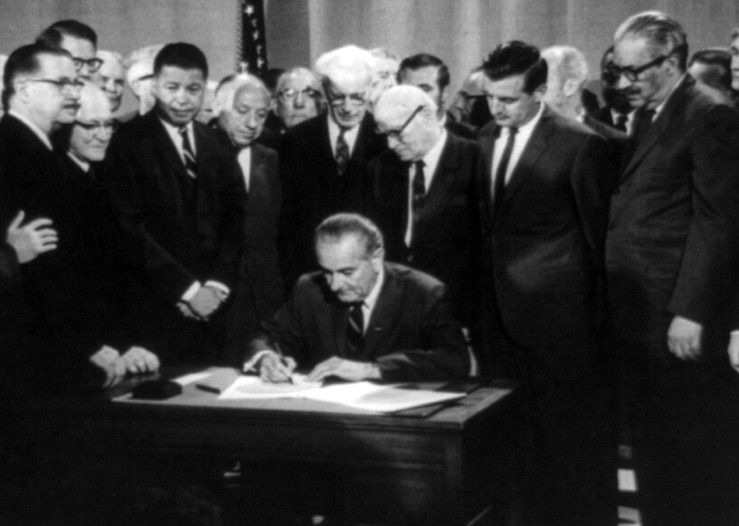
President Johnson signs Fair Housing Act on April 11, 1968. (AFP/Getty Images)
Following release of the report, Congress took up Title VIII of the Civil Rights Act (popularly referred to as the Fair Housing Act). The legislation prohibited discrimination in the sale, rental and financing of housing based on race, religion, national origin and sex. The bill stalled until Dr. King, a leading proponent of fair housing, was assassinated in Memphis, Tennessee, on April 4, 1968, touching off the greatest wave of social unrest in the country since the Civil War. Facing intense pressure, the House and Senate passed the bill before Dr. King’s funeral. On April 11, President Johnson signed into law the Fair Housing Act of 1968.
*Report of the National Advisory Commission on Civil Disorders (Kern Report)
Slum bailout in Dallas
After winning a Pulitzer Prize for National Reporting, Flournoy decided to focus his attention on a single federally-subsidized complex in Dallas—the Robin Square Apartments. His reasoning was simple: to bring about change, focus on the local story. The result was “Rewarding Neglect,” a four-part series published in The Dallas Morning News in March 1988.
The series showed that government officials committed nearly $10 million in federal funds to reopen an apartment complex that had been vacant for two years and was located in the city’s most crime-ridden neighborhood. Three government agencies—HUD, the Dallas Housing Authority and the City of Dallas—endorsed the project though each one possessed documentation that should have disqualified Robin Square from any federal housing program. The series showed the 156 black families who lived in Robin Square routinely had to deal with backed-up raw sewage, collapsing ceilings, exposed electrical wiring, rat infestation, and poor security. “It was like being chained in hell,” said one tenant. The project developer and a mortgage banker were the only persons to benefit from the Robin Square deal. [5]
Soon after the series appeared, HUD canceled the Robin Square contact and provided the 156 families with vouchers they could use to rent good apartments in safe neighborhoods. They happily did so.

A group of children sit on a balcony and others on a concrete courtyard below. This was the only “play area” available at Robin Square Apartments. (Photo courtesy of The Dallas Morning News – Paul Brown)
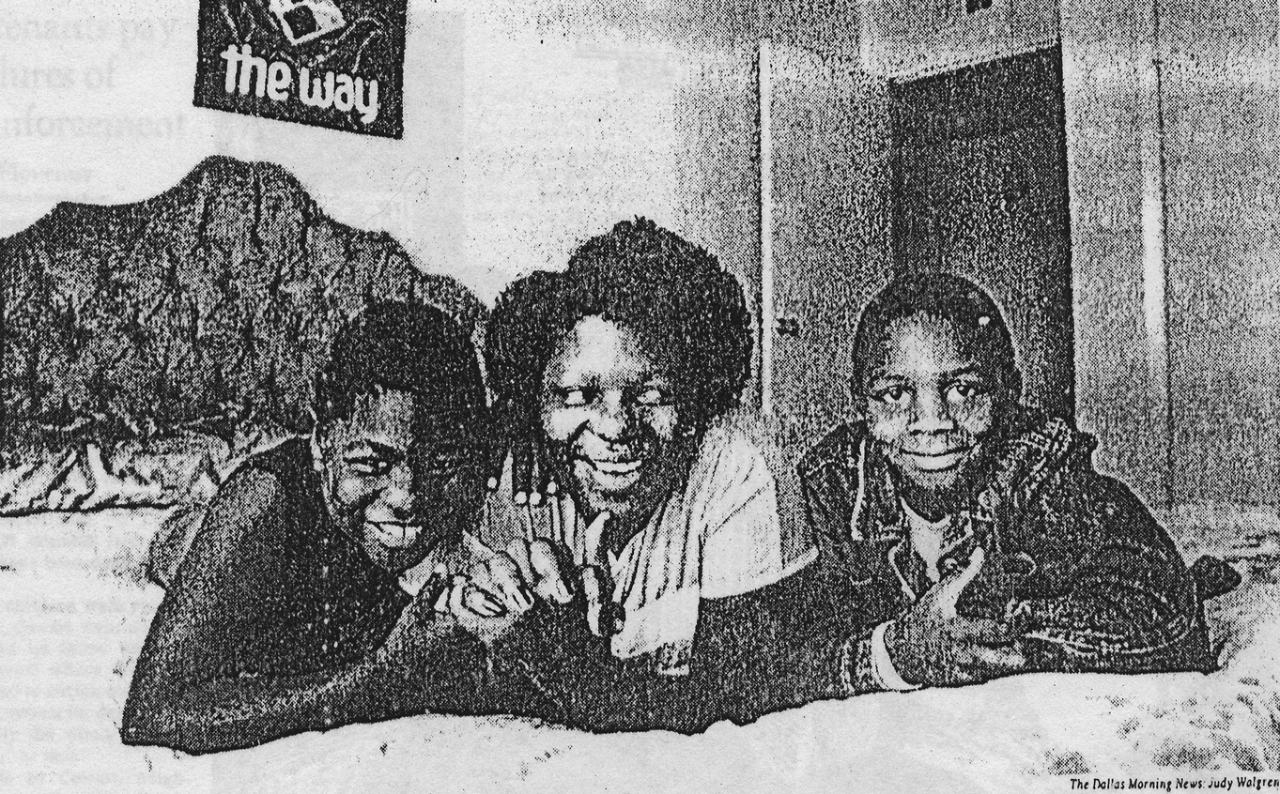
Shown in the image above are Sherlton Mays and her two children a few months after they moved out of Robin Square Apartments and into a nice apartment complex in a safe neighborhood in the White Rock Lake area in Dallas. Shortly after Ms. Mays moved into Robin Square, an intruder broke into her apartment, tied up her son Garette and forced him to watch as he raped Ms. Mays. Officials at the Dallas Housing Authority refused to let Ms. Mays move, forcing her, Garette and his brother Jermaine to remain in Robin Square for three years in the same apartment where she’d been raped. “This move is the best that ever happened to my family,” Ms May said. (Photo courtesy of The Dallas Morning News – Judy Walgren)
Fighting segregation today
For Flournoy, the fight for fair housing continues. Decades after his Pulitzer Prize-winning series ran in The News, Flournoy is still fighting housing discrimination along with a Dallas-based non-profit group he chairs, Inclusive Communities Project (ICP). In 2008, ICP filed a federal lawsuit against the Texas Department of Housing and Community Affairs, charging the agency “perpetuated racial segregation in Dallas by approving projects housing African-American families in poor, minority areas and elderly developments in mostly-white, middle-class neighborhoods.” U.S District Judge Sydney Fitzwater agreed. The state then appealed to the U.S. Supreme Court, arguing the Fair Housing Act requires proof of racist intent. However, in June 2015 the High Court sided with ICP. As Flournoy wrote,
“In a 5-4 decision, the Court for the first time said the 1968 Fair Housing Act recognizes a ‘disparate impact’ standard, meaning a judge can find an entity has perpetuated racial segregation without proof of racist intent.” [6]
Flournoy and others in ICP believe this decision is the beginning to what could, and should, be a new history. In his words:
“The Fair Housing Act was written in ‘results-oriented language’ that must play an important part in avoiding the Kerner Commission’s grim prophecy that ‘our Nation is moving toward two societies, one black, one white — "Separate and Unequal."'"
In other words, we can create a new history. As Robert Penn Warren wrote in the conclusion to his masterpiece All the King’s Men, those determined to not repeat the mistakes of the past must “go into the convulsion of the world, out of history into history and the awful responsibility of Time.” [7]
Looking forward
Flournoy welcomes his role on the retrospective panel on March 28 (FHA: A Look Back), but he prefers to focus on the future. That is why he teaches at the University of Cincinnati: he wants to encourage and inspire students to develop their journalistic skills and pursue the change they want to see in the world.
“I’ve told students that I am hard on them because it is my job to push them to make a positive difference in their communities,” Flournoy said, a smile creasing his face. “If that means I need to occasionally kick them in the butt, metaphorically speaking, then I’ll kick them in the butt.”
His methods are working. In 2016, a group of Flournoy’s students received the Investigative Reporters and Editors (IRE) Award in recognition of their outstanding investigative reporting in their piece, Robin Hood in Reverse: How universities force working-class students to pay thousands of dollars in hidden fees to athletic departments awash in red ink, which focused on how most universities in Ohio are using students’ tuition dollars to cover deficits in their athletics departments.
What’s next? Flournoy is writing a book examining how the white and black press covered the Civil Rights Movement. He also will continue to teach students to use their skills to make a difference so that they can create a new and better history.
Footnotes:
1: City housing officials said they have complied with today’s…(1983). UPI. Link: ups.com/Archives/1983/12/15/City-housing-officials-said-they-have-complied-with-todays/2441440312400/
2: Blacks, Whites Ordered to Swap Housing In Texas (1984). Jet. Volume 65, No. 18
3: Flournoy, Craig and Rodrigue, George. (1985). "Separate and Unequal". The Dallas Morning News.
4: Flournoy, Craig and Rodrigue, George. (1985). "Separate and Unequal". The Dallas Morning News.
5: Flournoy, Craig (1988). Rewarding Neglect. The Dallas Morning News.
6: Flourney, Craig. (2015) Making sense of Supreme Court ruling on Dallas housing case. Dallas News. Link: dallasnews.com/opinion/commentary/2015/06/25/craigflournoy-making-sense-of-supreme-court-ruling-on-dallas-housing-case
7: Flourney, Craig. (2015) Making sense of Supreme Court ruling on Dallas housing case. Dallas News. Link: dallasnews.com/opinion/commentary/2015/06/25/craigflournoy-making-sense-of-supreme-court-ruling-on-dallas-housing-case